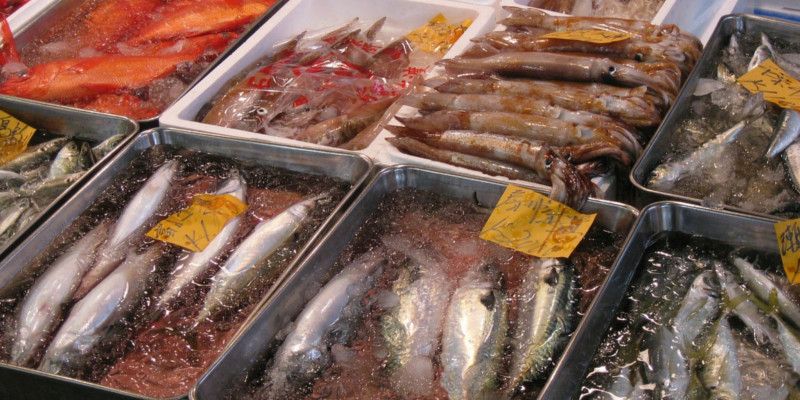The streets are narrow and full of people. Cardboard produce boxes line the aisles, overflowing with tall leeks, sturdy root vegetables, brightly colored citrus fruits, and more. The boxes are stacked to chest height to allow easy access to the items they contain. Nearby, chefs prepare sushi and other mouth-watering delicacies at small outdoor food stalls.
This is Tsukiji Jogai Shijo, the Outer Market of Tsukiji.
The Tsukiji outer market in Tokyo offers blocks of wholesale and retail shops and restaurants nestled along narrow streets – around 500 shops in all. Fresh produce and seafood abound, as well as food- and kitchen-related items, such as cooking knives.
Why should you consider a stop at the Tsukiji outer market on your next trip to Japan? This handy travel guide has everything you should know about this classic Japanese experience.
Table of Contents
How to get to Tsukiji Fish Market
The Tsukiji outer market is located adjacent to the former site of the world-famous Tsukiji Wholesale Market. You can use your Japan Rail Pass to get there quickly and easily. The closest JR station to Tsukiji is Shimbashi Station, about a 20-minute walk. Shimbashi station is served by JR Yamanote line, JR Keihin-Tohoku line, and JR Yokosuka line.
Alternatively, if you go to Tsukiji from Tokyo Station you can take the Marunouchi Subway Line to Ginza Station, then transfer to the Hibiya Subway Line to Tsukiji Station.
From Shinjuku Station, you can take the Oedo Subway Line to Tsukijishijo Station. The subway lines are not covered by the JR Pass.
Visiting Tsukiji Outer Market
The most sought-after experience at Tsukiji’s outer market is that of a sushi breakfast or lunch. Do not fret that the fish market is no longer located next door. Fresh fish is delivered daily from the Toyosu Market, making Tsukiji outer market one of Tokyo’s best places to purchase or enjoy fresh fish and seafood.
You can start your day early with breakfast at one of Tsukiji’s numerous sushi shops, which open at 5 am. Please note that many shops close by the early afternoon, so don’t delay.
If your lodging affords access to a kitchen, you may also wish to bring home fresh fish or vegetables to prepare your own delicious creations.

Hours and Fees
Hours vary from shop to shop, but 5 am to 2 pm is typical. The outer market is closed on Sundays and on national holidays. Some shops are also closed on Wednesdays. Admission is always free.
The best time to visit the Tsukiji Outer Market is early in the morning, before the crowds arrive and just when they start serving the delicious sushi and fresh seafood breakfasts of the day.
The Inner Market of Tsukiji Fish Market Has Moved
Tsukiji’s inner market – its famous wholesale fish market, where sushi chefs and restauranteurs from around the world bid on immense tuna, among other delicacies – closed on October 6, 2018. The wholesale fish market then moved to a new location in Toyosu, where it was renamed Toyosu Market. The outer market did not close, however, and will continue to be open for business.
Said one outer market representative:
“Even after the relocation of the inner market, we want to preserve the hustle and bustle as a food town with a long history.”
Toyosu remains the largest fish market in the world, and it too is worth a visit. The new location is about two kilometers from the old site at Tsukiji. A visit to the fish market will help connect you to the sources of the food you eat in a whole new way. You can view tuna auctions from dedicated viewing platforms, experiencing the aromas and chill air; check out more than 40 food stalls; visit the museum-style information area; or take a sushi making workshop.

How will you spend the remainder of your day? Check out our other Tokyo travel guides to help plan your next adventure.
